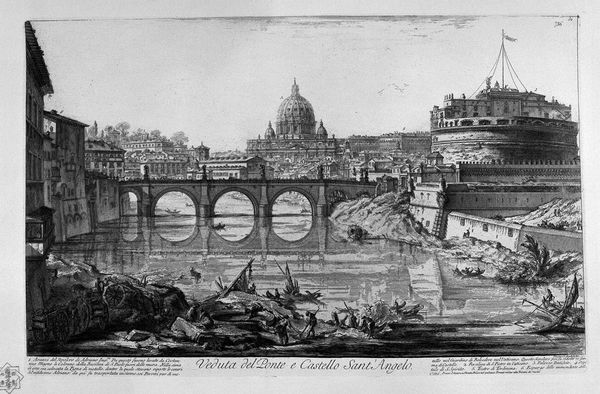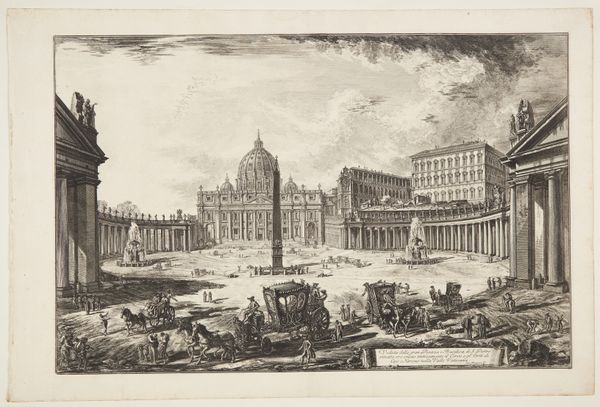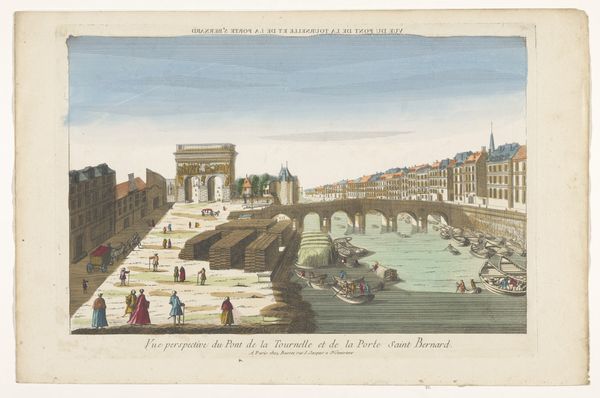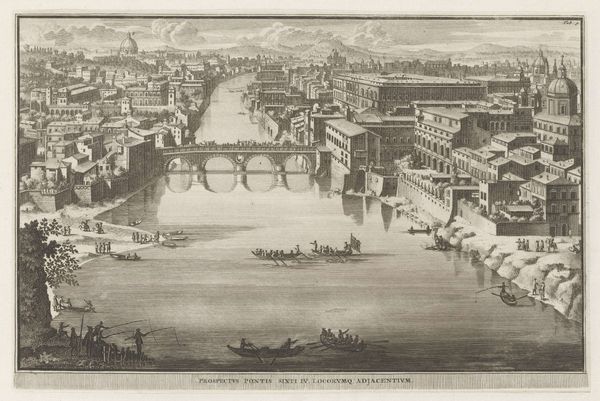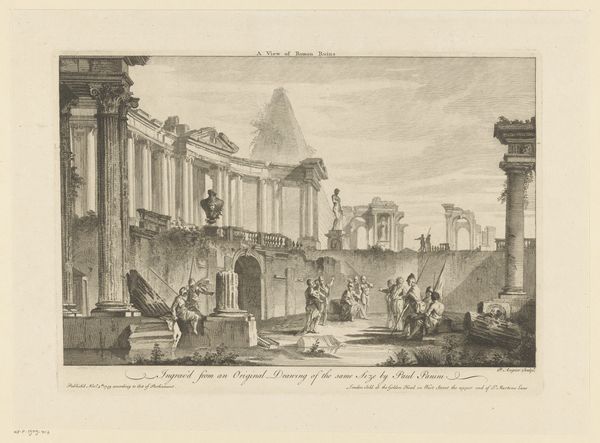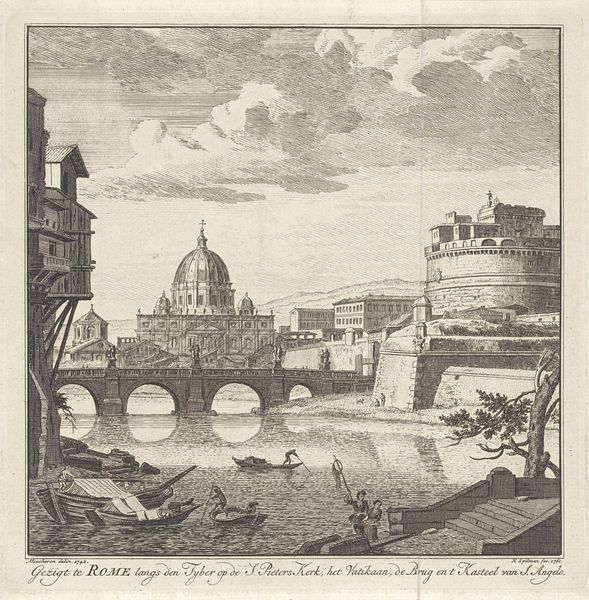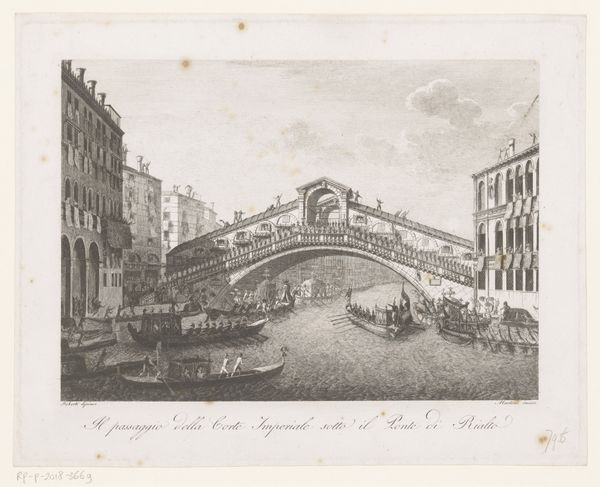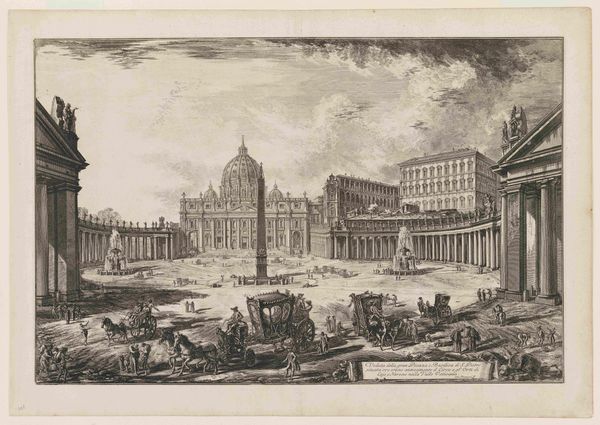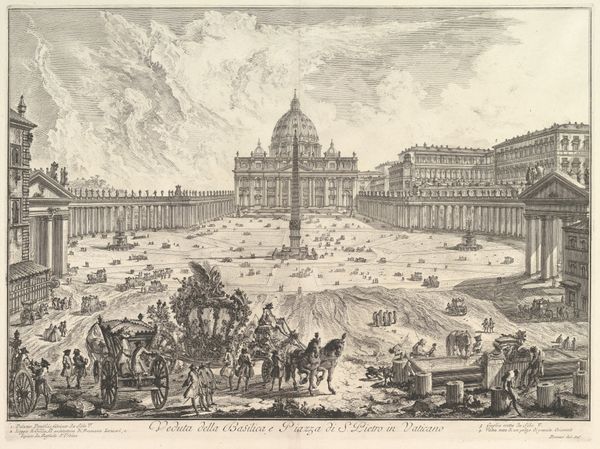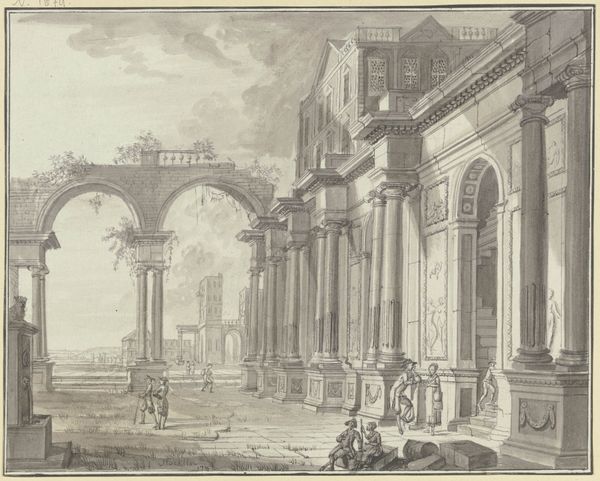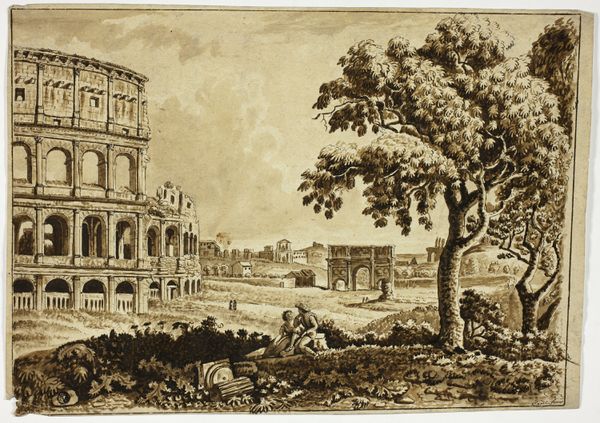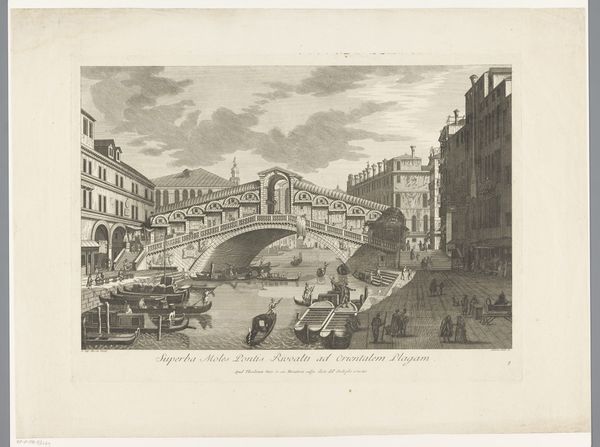
The Bridge and Castel S. Angelo (Veduta del Ponte e Castello Sant'Angelo 1749 - 1759
0:00
0:00
drawing, print, etching, engraving
#
drawing
#
baroque
# print
#
etching
#
cityscape
#
history-painting
#
engraving
Copyright: Public Domain
Curator: This is Giovanni Battista Piranesi's "The Bridge and Castel S. Angelo", created between 1749 and 1759. It's a striking etching and engraving depicting a bustling scene in Rome. Editor: The density of detail is immediately striking! It creates a visually rich, almost chaotic scene despite the limited tonal range of the etching. There is a real energy here, with the water swirling. Curator: Indeed. Piranesi uses a dense network of lines to create varying textures and depths. Consider how the structural elements of the bridge, the Castel Sant'Angelo itself, and even St. Peter’s Basilica in the background, all serve as organizational devices for this composition. The geometry gives structure to this scene of apparent bustling labor. Editor: The technique itself is crucial. Etching and engraving, requiring physical labor and careful application, highlight the deliberate and constructed nature of the view. Each line is a result of intentional action, not mere representation. This image gives us a glimpse into the creation of imagery during that period. Consider, too, how prints would then allow for circulation. It is an accessible item to disseminate knowledge about Rome. Curator: Absolutely. And within this created space, we find this play between light and shadow—the ways that Piranesi uses the formal elements to almost construct the reality of Rome itself. It’s a carefully designed representation of grandeur. The lines work together to direct the eye and communicate a sense of architectural might. Editor: The subject also brings into focus a sort of staged presentation of progress. One is presented a bustling waterfront with commerce, travel, labor...The composition highlights a sort of staged experience—a narrative manufactured by labor for the consumer's gaze. The aqueduct, or at least an attempt at portraying one, stands off in the background like scenery. Curator: I appreciate your highlighting the labor here. It is worth noting how the artistic vision marries precision with expressive freedom. How those etched lines really generate a very dramatic visual impact by way of highly controlled materials and method. Editor: Ultimately, engaging with Piranesi's work means acknowledging that his views of Rome serve as complex representations of architectural and material construction—historical reality filtered through a calculated, artful lens. Curator: Agreed, reflecting on his command of visual form only enriches our understanding of this era’s representational practices.
Comments
No comments
Be the first to comment and join the conversation on the ultimate creative platform.
